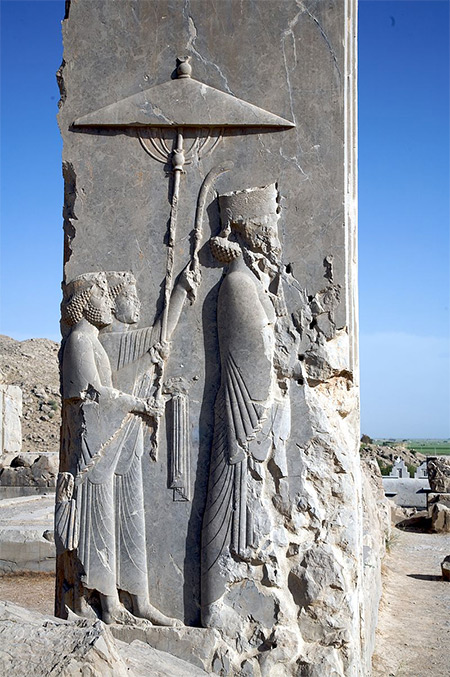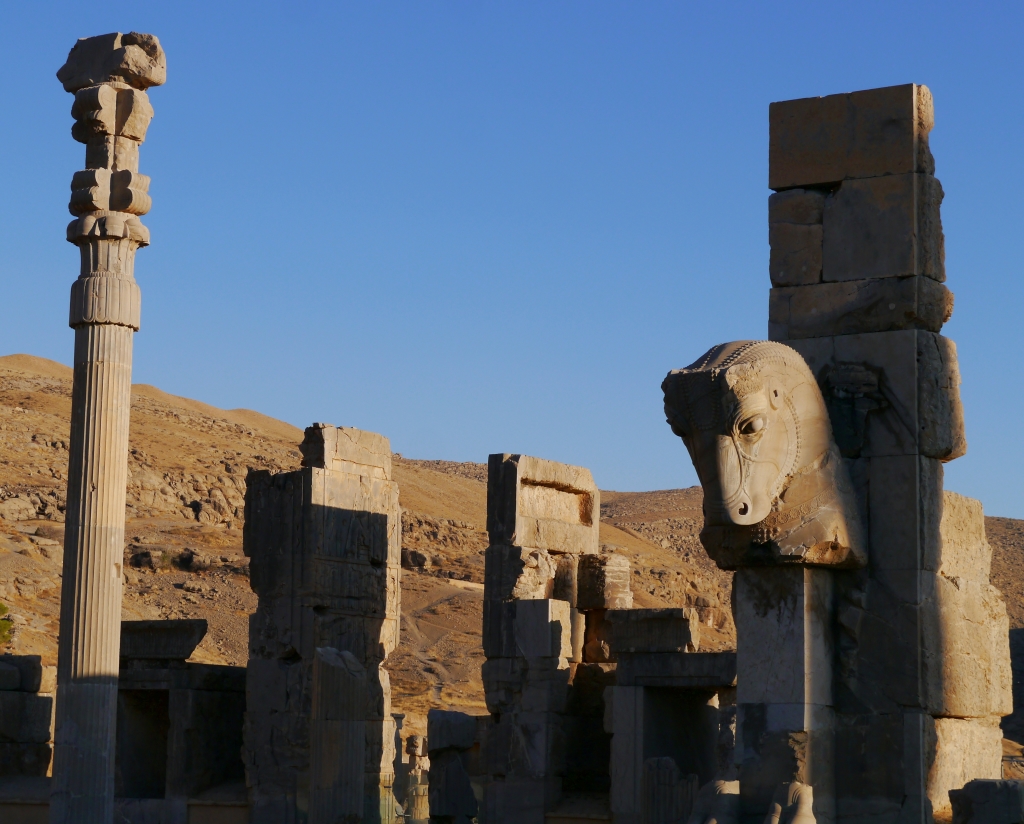A Symbol of Imperial Grandeur
Founded by King Darius I in 518 B.C., Persepolis was the ceremonial heart of the Achaemenid Empire, symbolizing its vast power and cultural diversity. Built with influences from Egypt, Babylon, and Greece, the city reflected the empire’s ambition and administrative sophistication.

The Palace of Xerxes: A Royal Statement
Among Persepolis’ most notable structures, the Palace of Xerxes features a relief on its doorway depicting the king with his attendants. Key details include:
- A parasol, signifying royal status and divine favor.
- A fly whisk, representing courtly refinement.
These elements reinforced the structured hierarchy of Persian rule, where the king’s authority was central to governance.

A Multicultural Empire
Persepolis’ artwork depicts subjects from across the empire—Medes, Babylonians, Egyptians, and Greeks—bringing tribute to the Persian king. This imagery underscored the Achaemenid policy of governing through inclusion rather than force, integrating diverse cultures into a unified administration.

Destruction and Legacy
In 330 B.C., Alexander the Great sacked and burned Persepolis, an act seen as revenge for the Persian invasion of Greece. Despite its destruction, Persepolis remains a UNESCO World Heritage Site, offering invaluable insights into the political and artistic achievements of the Achaemenid Empire.

Conclusion
Persepolis stands as a lasting testament to the vision, power, and cultural inclusivity of the Persian Empire. Its ruins continue to fascinate scholars and visitors, preserving the legacy of one of history’s greatest civilizations.

